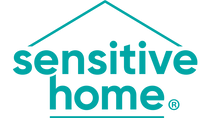Best non-toxic house cleaner for disinfecting

Dangers of "kill cleaners" residue
People have been increasing the use of disinfectants to help kill viruses that can impact our health. But these products contain Environmental Protection Agency (EPA)-registered pesticides that might cause harm if not used as directed.
The results of a recent CDC survey found that 1/3 of people have used disinfectants in risky ways. For example, they have washed food with bleach, and applied disinfectant products to their bare skin.
Even when using cleaning and disinfecting products as directed, we need to be very careful. “Disinfectants, by design, kill living organisms, so in order to keep you and your family safe, you need to follow label directions” says Jason Marshall, Laboratory Director at the Toxics Use Reduction Institute. Disinfectants can kill viruses, but can also harm human and planet health as they can contain harmful chemicals like quaternary ammonium compounds. These chemicals can trigger or cause asthma, respiratory, skin and eye irritation.
The Basics: the difference between cleaning, sanitizing and disinfecting
Cleaning should be a routine process. It reduces dirt, irritants, food residue, germs and allergens by removing them from surfaces. Soap, detergent + water or an all purpose cleaner like Sensitive Home's can help physically remove germs but it won't necessarily kill them. Cleaning helps to lowers the risk of spreading infection and is a MUST before sanitizing or disinfecting.
Sanitizing is important for health and hygiene, particularly on communal surfaces. It reduces but doesn’t kill bacteria + viruses and is typically done to meet public health standards. Sanitizers work on hard non-porous surfaces and are particularly important to use in food preparation areas. In addition, you might use a dishwasher to sanitize the dishes, due to its high heat. Or you could be using an antibacterial wipe on a tv remote! Sanitizing does not necessarily clean dirty surfaces or remove germs which is why you should always clean the surface first.
Disinfectants are stronger than sanitizers and use chemicals to kill 99.999% of viruses, bacteria, or other microorganisms on hard, non-porous surfaces. Some common disinfectants are bleach and alcohol solutions. Disinfectants require a clean surface to be effective as they do not necessarily clean dirt or remove germs. Disinfectants usually need to be left on the surface for a certain period of time to kill the germs and the effect is temporary (germs can grow again). All disinfectant products require EPA approval.
A safer alternative for your sanctuary
Remember, it doesn’t always make sense to try and detox a house by spreading even worse chemicals around! The good news is that some disinfectants on the EPA’s list for use against viruses include MUCH safer active ingredients, like hydrogen peroxide, ethanol, and citric acid so look for products using these ingredients.
Tips to disinfect safely
- Clean before you disinfect. It is much harder for a disinfectant to kill the organisms if they are covered with dirt. So clean first, and then disinfect.
- Never mix cleaning and disinfecting chemicals together. Mixing chemicals can cause dangerous reactions. Especially with DIY cleaners, if bleach and ammonia are mixed, they produce toxic gases that can be lethal.
- When using disinfecting or sanitizing products, always follow EPA and CDC guidelines, as well as product label instructions. Check to see that the antimicrobial product has an EPA registration number on the label — if it does not, it cannot legally be sold as a disinfectant or sanitizer, and has not demonstrated that it can pass rigid standards for efficacy and safety.
- Using disinfecting products with active ingredients such as ethanol, hydrogen peroxide, and citric acid as active ingredients will leave less-harmful residues (again, look at the label!).
- Beware of overusing disinfectants. Disinfecting kills all microorganisms, good and bad. There is a school of thought that some “microflora” are beneficial, and that overuse of disinfectants can cause its own health issues and promote the growth of super bugs!
References:
https://www.uml.edu/news/stories/2020/disinfectingsafely.aspx
https://www.geneontechnologies.com/blog/the-dangers-of-chemical-residue-left-by-cleaning-products/



